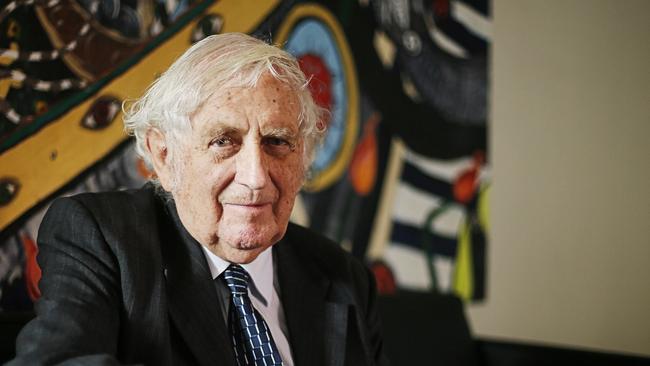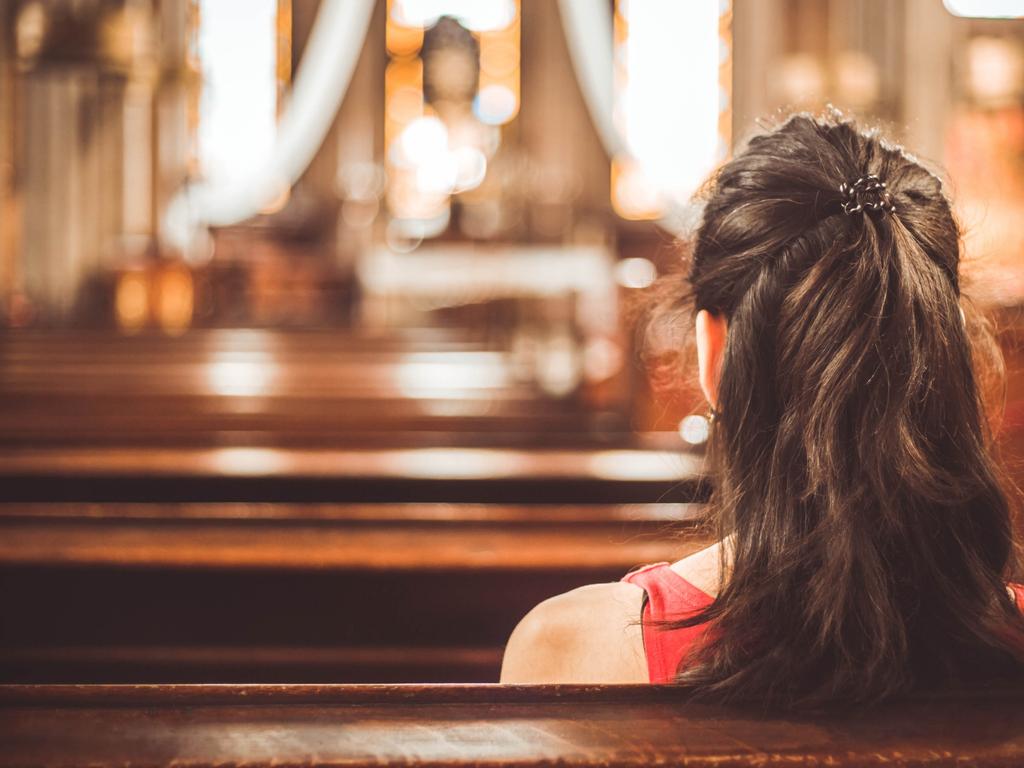Fortress Australia feeling slower, lower and weaker
The last time interstate rivalries neared this boiling point was in a crisis strikingly similar. The result should give us all hope.

Our isolated nation under strain, bent not broken, testing and tracing in haste to combat a devious disease, is about to conduct a stocktake to help shape our post-pandemic future.
As Australia prepares for its national selfie on Tuesday, it’s easy to catalogue the freedoms we’ve surrendered and the smaller lives we temporarily have, but we shouldn’t lose sight of the arc of success, especially in the five years since our previous census.
While Covid-19 overloads our brains and all digital provinces, there is a statistical scoreboard. No medals are on offer, but we are faster, higher, stronger on some measures. Yet with much of the nation in interminable lockdown, the Australian Bureau of Statistics will pick up we’re slower, lower, weaker, and more parochial.
Eminent historian Geoffrey Blainey sees a country that is “seriously divided but not dangerously divided”. “The strength of the interstate rivalries and loyalties is startling in some months, but it will probably subside quickly when the pandemic is past,” Blainey tells The Weekend Australian. “In the Spanish flu those same rivalries were at near-boiling point in Australia, but the temperature fell quickly when the virus was almost gone.”
With our largest cities in lockdown, Blainey sees compulsion as “a thorny topic today”. “Compulsion to vaccinate or compulsion to stay at home or compulsion not to do this or that: they raise our nation’s blood pressure,” he says.
“History is a useful guide. In the 1850s the compulsion to buy an expensive licence to dig for gold spurred the Eureka rebellion. In the First World War the question of conscripting or forcing young Australian men to fight overseas divided the nation to a dangerous degree; and the divisions were felt for more than half a century.”
Since 2016, our wealth has grown, particularly property and superannuation assets, while adding 2.3 million people to reach an estimated resident population of 25.7 million last December. Our families are smaller, with homes seemingly out of reach for younger workers and their debt burden a lot heavier than that carried by their parents and grandparents.
But money is ultra-cheap. Deloitte Access Economics partner Chris Richardson says Covid-19 “has clobbered interest rates much more than it has hurt jobs”. “Although it was under way anyway, the pandemic saw Australia join the rest of the rich world in an era of super low interest rates,” Richardson says.
“Those lower rates let us borrow more. And the increased borrowings pushed up the price of everything from houses to shares – globally too. That’s different. Recessions usually hurt our wealth. This one helped it.”
The pandemic has supercharged big shifts, especially the way we shop, work and communicate. It’s too early to detail the trail of social scarring and who will prosper from the pandemic.
Since February last year when we closed our borders, migration has plummeted to its slowest growth in over 100 years. For 20 years, migration has been the main driver of population growth.

During the pandemic, we’ve seen a net outflow of 100,000 temporary migrants, with a slightly smaller exodus expected in the year ahead. With foreign students returning home the number of people aged 20 to 24 in Australia dropped by 4 per cent last year. That halt in migration, coupled with a slide in fertility as parents delay having children because of the uncertainty due to Covid, will see fewer babies born in the next few years, as well as rise in the median age. Right now, the median age is 38, up from 35 at the start of the century.
The pandemic has seen a record surge to the regions, driven primarily by people fleeing Melbourne for smaller towns and young people in the bush staying put rather than heading to the cities for work and study.
The census will ask us about ancestry, including where our parents were born. In June last year there were 7.6 million migrants living in Australia or 29.8 per cent of the population. The last time we had that proportion of overseas-born was in the 1890s.
Migrants from England still hold top place, with just under one million of them. Since 2015, the largest number of new migrants have come from India, China and The Philippines.
In 2016, there were 800,000 Aboriginal and Torres Strait Islanders, with 35 per cent aged under 15 (compared with 18 per cent for non-Indigenous Australians) and 5 per cent aged over 65 (16 per cent for non-Indigenous).
In the five years to the previous census, the number of Indigenous Australians grew at four times the rate of the non-Indigenous population, due to higher births and, according to NSW government demographers, “an increased propensity for people to identify as Aboriginal and/or Torres Strait Islander and to identify their children as such”.
The ABS estimates there will be 900,000 Indigenous Australians next year and one million by 2028. Life expectancy for Indigenous Australians, however, is 10 years below the national average.
On Thursday, Scott Morrison and Anthony Albanese recommitted to reducing Indigenous disadvantage. The Labor leader told parliament: “First Nations people are still far more likely to be jailed, die by suicide, and have their children removed than non-Indigenous Australians. A gap is something that is easily crossed or closed. The unflinching litany of lopsided statistics before us make it clear this is a chasm.”
Although there are more employed Australians than ever, the census will report many unable to attend a workplace or in limbo relying on disaster payments.
One of the big moves in the past five years that has taken economists by surprise has been higher workforce participation, particularly among women and people aged over 55.
Reserve Bank governor Philip Lowe has said this reflects the wider availability of flexible and part-time work, changes to childcare, improved health outcomes for older Australians and changes in the pension age.
In a recent speech, Lowe noted increased demand for health services and social assistance, which has led to very strong jobs growth in these areas. “So there has been a broadly parallel increase in labour demand and labour supply, and this has lessened the upward pressure on wages,” he said.
The great wage stagnation goes on, as do near-zero interest rates for the next few years.
In 2016, 52 per cent of Australians were Christians, whereas 50 years earlier it was 88 per cent; 30 per cent stated “no religion” at the previous census, compared with fewer than 1 per cent in 1966.
It is not surprising that rates of traditional civic engagement and voluntarism slumped during the pandemic. Perhaps the new forms of digital community participation are difficult to measure. But the national mood has soured, with a deterioration in mental health among our young.
Blainey, born in 1930 when our population was 6.5 million, is not as gloomy as some social scientists, who see no return to normal. “The economic contrast between the moods and economic fortunes of the public and private sector is sharper than perhaps at any time in the last 80 years,” he says.
“The contrast would have been even sharper but for the heavy government spending. At present I am more optimistic than pessimistic about the long-term future of Australia and the world. Whether I will feel the same way in five years from now I don’t know. The present mood of caution or pessimism comes not only from the pandemic but also the fear of a major war, the turmoil in the USA, future climate, and other factors. The pandemic is just part of a cocktail.”







To join the conversation, please log in. Don't have an account? Register
Join the conversation, you are commenting as Logout